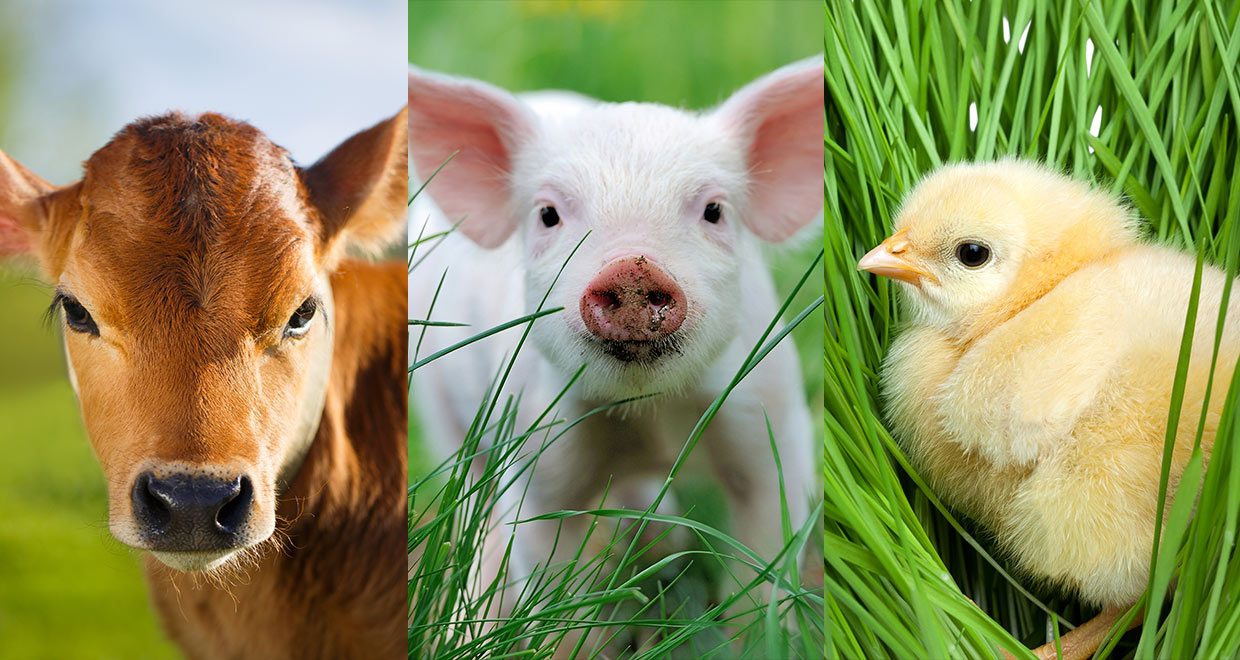Acceleration of growth disturbs health
The animal article of the month for March is ‘Invited review: resource allocation mismatch as pathway to disproportionate growth in farm animals – prerequisite for a disturbed health‘
Resources are nutrients and energy which must be properly used during growth and development, and later on for performance. Since a physiological time frame is given by the genomic structural design of each animal, sufficient resources must be available at any time and for adequate time windows. Physiologically, during early growth, young animals develop organs and supportive tissues by means of maintenance metabolism and ontogenic growth processes. In the modern farm animal, this early development is often fastened mostly due to economic reasons. Dairy cows are pushed into an early first calving age by intensive feeding of energy-dense starchy diets to obtain genetically-determined high-lactation performance. Body weight gain in fattening pigs and broilers is accelerated by energy- and protein-dense diets, genetic selection for high food intake and for prioritizing muscle growth; in broilers especially the growth of breast muscle. Prioritizing and accelerating performance reduces the metabolic ability to allocate resources to maintenance, proper ontogenic growth and the immune system. Maintenance metabolism is the most important process to get and to keep well-developed and functional cells, tissues and organs in farm animals of each species.
Early production and reproduction cause resource allocation mismatch by deviating energy and nutrients away from the maintenance of organs, tissues and cells, resulting in disproportionate growth. “Mismatch” means that resources such as nutrients, energy and time are shifted to the genetically prioritized tissues, eg. breast muscle in the broiler chicken. Since resource availability is limited by dietary intake, digestion and absorption of nutrients in the gastrointestinal tract, a lesser amount of resources are left over for the growth of the heart and lungs of the chicken. As a consequence, oxygen availability, especially for the rapidly growing muscle, is reduced, causing damage of muscle cells. This is called myopathy and affects the animal’s health and welfare. Furthermore, the rapidly growing breast muscle is associated with increased body weight gain; thus, the rise in body mass is too quick for the proper growth of bones, especially leg bones. The breast muscle growth overruns the maturation of the bone resulting in severe bone damage. The chickens are not able to move properly any more.
To summarize, immature organs and tissues are not able to sufficiently support the body’s energy metabolism and structure, so the animal is prone to suffering from production diseases. Animals with resource allocation mismatch lose their ability to cope with disadvantageous keeping and feeding conditions.
The most prominent factor to maintaining a proper resource allocation is time for the maturation of body tissues (e.g. liver, bones) and organs (e.g. heart, lung) in early life. Slowing down development will need a change in feeding concepts but also in breeding strategies. Although it may produce higher costs in raising the animal, later performance and a long productive life-span resulting in higher financial output will balance the costs. Slowing down the juvenile development to maintain adequate resource allocation to maintenance and ontogenic growth will result in animals with mature organs and tissues, which can carry the burden of high performance.
This article is freely available for one month: ‘Invited review: resource allocation mismatch as pathway to disproportionate growth in farm animals – prerequisite for a disturbed health‘.
Author: K. Huber
The animal Article of the Month is selected by the Editor-in-Chief and is freely available for one month. View the recent selections






